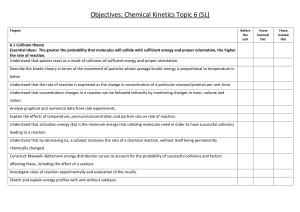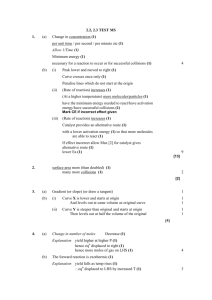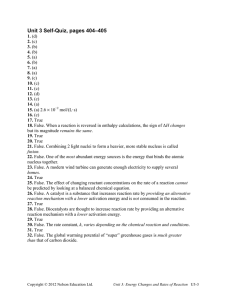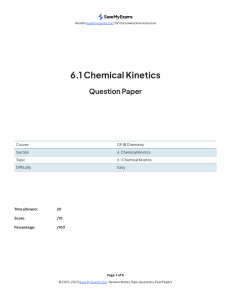Only a small fraction of collisions result in a chemical
advertisement
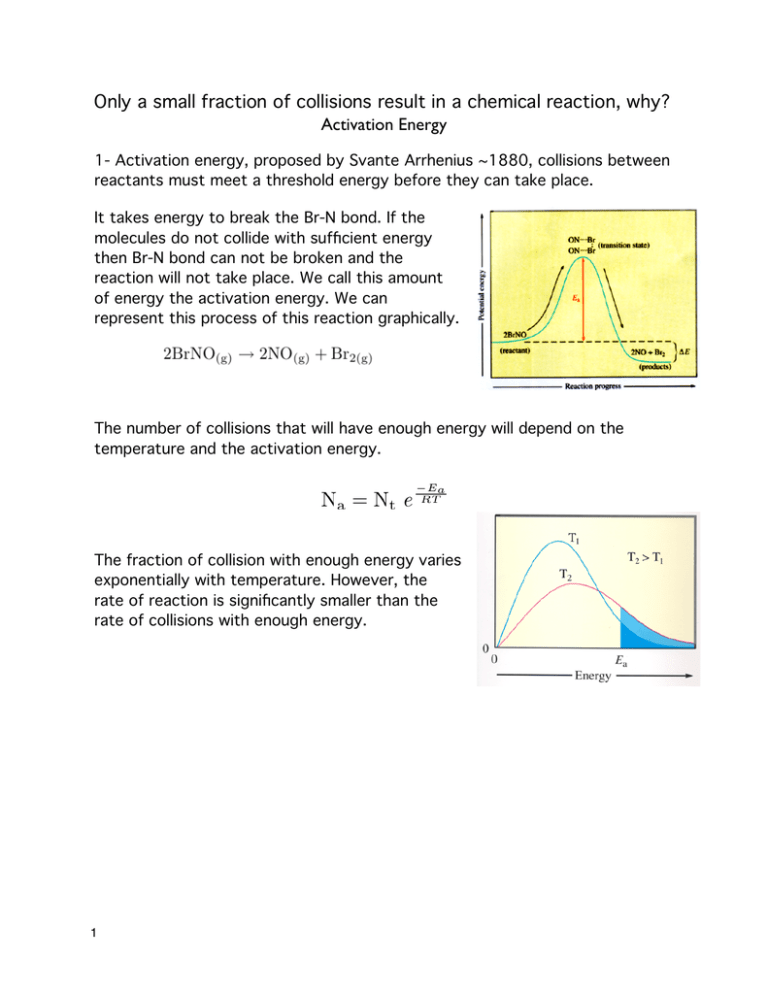
Only a small fraction of collisions result in a chemical reaction, why? Activation Energy 1- Activation energy, proposed by Svante Arrhenius ~1880, collisions between reactants must meet a threshold energy before they can take place. It takes energy to break the Br-N bond. If the molecules do not collide with sufficient energy then Br-N bond can not be broken and the reaction will not take place. We call this amount of energy the activation energy. We can represent this process of this reaction graphically. The number of collisions that will have enough energy will depend on the temperature and the activation energy. The fraction of collision with enough energy varies exponentially with temperature. However, the rate of reaction is significantly smaller than the rate of collisions with enough energy. 1 Sterics The reason that the rate of reaction is significantly slower than the rate of collisions has to do with the way the molecules must collide for a reaction to take place. The importance of molecule orientation is called sterics. Mathematically we can describe the importance of sterics with a steric factor (p). A value less than 1 which describes what fraction of collisions occur with the correct orientation. We can now relate the rate constant (k) to the activation energy and the steric factor mathematically in the Arrhenius equation. Catalyst A catalyst is a substance that speeds up a reaction with out being consumed by the reaction. Catalyst lower the activation energy by changing the activated complex and are generally a surface chemistry effect. 2


